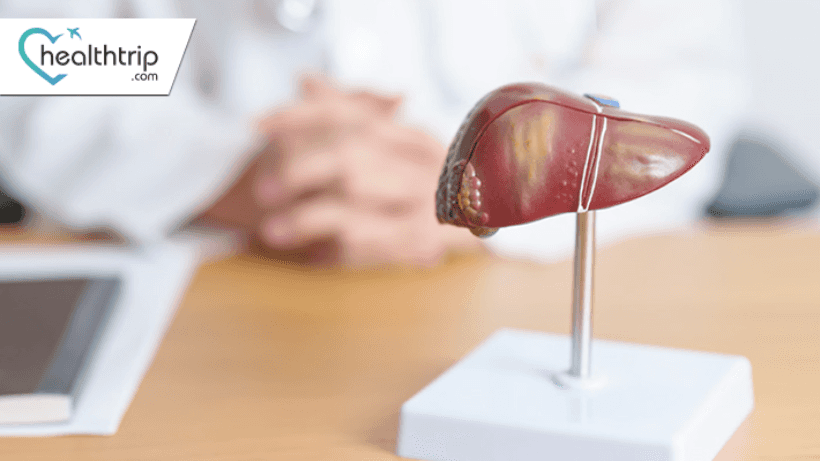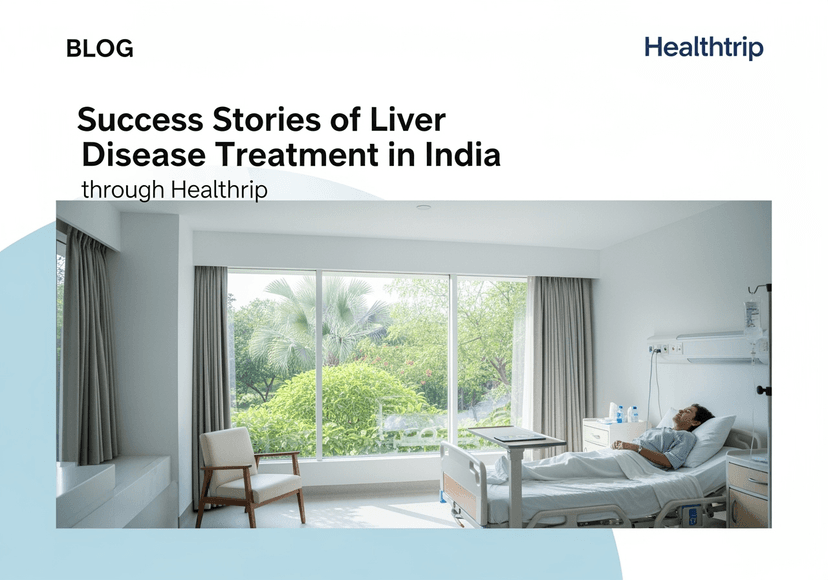
Fatty Liver Disease: Types, Causes, Symptoms, and More
16 Sep, 2023
 Healthtrip Team
Healthtrip TeamFatty liver disease, though often overshadowed by more well-known health concerns, is a quietly growing epidemic that deserves our attention. It's a condition that can affect anyone, from all walks of life, and understanding it is the first step towards better liver health. In this user-friendly guide, we aim to demystify fatty liver disease, starting with the basics. Whether you're grappling with a recent diagnosis, curious about this lesser-known health issue, or just seeking some insights into better liver care, join us as we embark on a journey to explore fatty liver disease.
Most popular procedures in India
What is Fatty Liver in Simple Terms?
Fatty liver" is a term that describes the buildup of excess fat in the liver cells. It's like when too much fat accumulates in a place where it shouldn't be in large amounts. Just as a person can gain weight and have too much fat stored in their body, the liver can also "gain weight" from too much fat.
Wellness Treatments
Give yourself the time to relax
Lowest Prices Guaranteed!

Lowest Prices Guaranteed!
The liver is supposed to have some fat, but if the fat makes up more than 5% to 10% of the liver's weight, then it's considered a fatty liver. This condition can be caused by heavy alcohol use (alcoholic fatty liver disease) or by other factors like obesity, diabetes, or high cholesterol (non-alcoholic fatty liver disease, or NAFLD).
Having a fatty liver can be harmful because it may lead to more serious liver problems, including inflammation, scarring (cirrhosis), and even liver failure if it's not managed properly.
Types of Fatty Liver Disease
When it comes to fatty liver disease, there are essentially two main types, each with its own set of characteristics and causes:
1. Alcoholic Liver Disease (ALD):
This type of fatty liver disease is directly tied to excessive and prolonged alcohol consumption. It's important to understand that ALD isn't limited to heavy drinkers; even moderate alcohol consumption over a long period can lead to this condition. ALD typically progresses through several stages:
- Alcoholic Fatty Liver: It all starts with the accumulation of fat in the liver. This is often reversible if alcohol consumption is reduced or eliminated.
- Alcoholic Hepatitis: With continued alcohol abuse, inflammation of the liver can occur, leading to a condition called alcoholic hepatitis. Symptoms can range from mild discomfort to severe liver damage.
- Cirrhosis: The most advanced stage of ALD is cirrhosis, where the liver tissue becomes scarred and may lose its ability to function properly. At this point, severe complications can arise, and a liver transplant may be necessary.
2. Non-Alcoholic Fatty Liver Disease (NAFLD):
Unlike ALD, NAFLD has nothing to do with alcohol consumption. Instead, it's closely linked to metabolic factors and often associated with conditions such as obesity, insulin resistance, and metabolic syndrome. NAFLD encompasses a wide spectrum of conditions:
- Simple Steatosis (Fatty Liver): This is the early stage, where fat accumulates in the liver but doesn't cause inflammation or significant damage. In many cases, it can be managed and even reversed with lifestyle changes.
- Non-Alcoholic Steatohepatitis (NASH): In NASH, the fat buildup in the liver triggers inflammation and can lead to more serious liver damage. NASH is a more concerning stage of NAFLD, and it may progress to cirrhosis over time.
- Understanding these two types of fatty liver disease is essential because their causes, progression, and treatment strategies can be quite different. Whether it's due to alcohol or other factors, taking care of your liver health is crucial to preventing and managing these conditions effectively.
You may also like too: Symptoms of Liver Disease: Unmasking the Silent Threat (healthtrip.com)
Causes of Fatty Liver:
- Excessive and prolonged alcohol consumption.
- Carrying excess weight, particularly around the abdomen.
- Reduced sensitivity to insulin, often associated with obesity and type 2 diabetes.
- Elevated levels of cholesterol in the bloodstream.
- Elevated triglyceride levels in the blood.
- Losing weight too quickly through crash diets or certain surgical procedures.
Symptoms of Fatty Liver Disease:
- Feeling unusually tired and lacking energy.
- Mild to moderate pain or discomfort in the upper right side of the abdomen.
- Yellowing of the skin and eyes, which can indicate advanced liver damage.
- Losing weight unintentionally, which may be related to liver issues.
- Fluid retention, particularly in the abdomen and legs, leading to swelling.
These symptoms can vary in intensity and may not always be present, especially in the early stages of the disease. Some individuals with fatty liver disease may not experience any noticeable symptoms at all.
You may also like too: Symptoms of Liver Disease: Unmasking the Silent Threat (healthtrip.com)
Diagnosis of Fatty Liver Disease:
Diagnosing fatty liver disease typically involves a combination of the following steps:
- Physical Examination: Your healthcare provider may perform a physical exam to check for signs such as an enlarged or tender liver.
- Blood Tests: Blood tests can assess liver function and enzyme levels, as well as rule out other potential causes of liver problems. Elevated liver enzymes, particularly ALT (alanine aminotransferase) and AST (aspartate aminotransferase), can indicate liver damage.
- Imaging Tests: Various imaging tests, such as ultrasound, CT scans, or MRI scans, can be used to visualize the liver and assess the presence and severity of fat accumulation and potential liver damage.
- Liver Biopsy: In some cases, a liver biopsy may be recommended. During this procedure, a small sample of liver tissue is taken for analysis. This can help determine the extent of liver damage and rule out other liver conditions.
- FibroScan: This non-invasive test measures liver stiffness, providing insights into the degree of fibrosis (scarring) in the liver, which can help determine the stage of liver disease.
The combination of these diagnostic methods allows healthcare professionals to determine the presence of fatty liver disease, its severity, and any associated complications. It's essential to consult with a healthcare provider if you suspect you have fatty liver disease or have risk factors for it. Early diagnosis and management are key to preventing further liver damage.
Treatments for Fatty Liver Disease:
Managing fatty liver disease primarily involves lifestyle modifications and, in some cases, medical interventions. Here are the key components of treatment:
- Weight Management: If you're overweight or obese, losing weight through a combination of a balanced diet and regular exercise is often the first and most effective step in managing non-alcoholic fatty liver disease (NAFLD). Gradual, sustainable weight loss can reduce fat accumulation in the liver.
- Dietary Changes: Adjusting your diet is crucial. Reducing sugar and saturated fat intake while increasing fiber consumption can help improve liver health. A registered dietitian can provide personalized guidance.
- Exercise: Regular physical activity can improve insulin sensitivity and aid in weight loss. Aim for at least 150 minutes of moderate-intensity aerobic exercise per week.
- Medications: In some cases, healthcare providers may prescribe medications to manage underlying conditions such as diabetes, high cholesterol, or high blood pressure, which can contribute to fatty liver disease.
- Alcohol Abstinence: If you have alcoholic liver disease (ALD), quitting alcohol consumption is essential to prevent further liver damage. Seek support if needed.
- Monitoring: Regular check-ups and follow-up tests are essential to track the progress of fatty liver disease and ensure that your treatment plan is working effectively.
Risks and Complications:
Fatty liver disease can lead to various complications if left untreated or unmanaged:
- Cirrhosis: Prolonged liver inflammation and scarring can progress to cirrhosis, a condition where healthy liver tissue is replaced by fibrous tissue. This can lead to liver failure.
- Liver Cancer: Individuals with cirrhosis, especially in the context of NAFLD, are at an increased risk of developing liver cancer (hepatocellular carcinoma).
- Liver Failure: Advanced liver disease can result in liver failure, necessitating a liver transplant.
- Cardiovascular Disease: NAFLD is associated with an increased risk of heart disease and stroke, making it important to address cardiovascular risk factors.
Outlook and More:
The outlook for individuals with fatty liver disease varies depending on its type and severity. Here's more information:
- Early Detection is Key: Early detection and intervention are crucial for managing fatty liver disease effectively.
- Lifestyle Matters: Lifestyle changes, including a healthy diet, regular exercise, and weight management, can halt or even reverse the progression of NAFLD.
- Abstinence is Essential: For those with ALD, abstinence from alcohol is paramount to prevent further liver damage.
- Regular Monitoring: Routine follow-up with your healthcare provider is essential to monitor liver health and adjust your treatment plan as needed.
- Quality of Life: With proper care and a commitment to a healthier lifestyle, many individuals with fatty liver disease can enjoy a good quality of life.4
Everyone's situation is unique, and it's essential to work closely with your healthcare team to develop a personalized treatment plan and address any questions or concerns you may have about fatty liver disease. Your liver health is worth the effort and attention to detail.
Related Blogs

Success Stories of Liver Disease Treatment in India through Healthtrip
Explore how to treat liver disease in India with top

Affordable Treatment Options for Liver Disease in India with Healthtrip
Explore how to treat liver disease in India with top

Healthtrip’s Guide to Treating Liver Disease in India
Explore how to treat liver disease in India with top

Best Doctors in India for Liver Disease Management
Explore how to treat liver disease in India with top

Top Hospitals in India for Liver Disease Treatment
Explore how to treat liver disease in India with top

Living with Liver Cirrhosis: Coping with Emotional Challenges
Discover ways to cope with the emotional challenges of living










